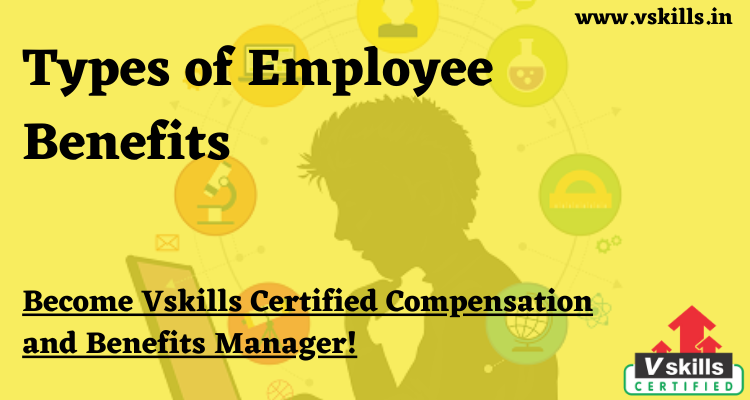Types of employee benefits- Employee benefits are the perks offered to the employees of an organization other than the salary. The most common benefits are medical insurance, disability insurance, life insurance, retirement benefits, paid leaves and fringe benefits. Benefits are quite valuable and are considered a part of the total compensation of an employee.
- Medical Insurance: Medical Insurance covers the cost of the physician or surgeon fees, hospital rooms, and prescription drugs. Dental and optical care might be offered as part of an overall benefits package. It may be offered as separate pieces or not covered at all. Coverage can sometimes include the employee’s family. Employers usually pay all or part of the premium for employee medical insurance. Often employees pay a percentage of the monthly cost.
- Disability Insurance: Disability insurance replaces a part or whole of the income of an employee when he is not able to perform his duties due to some illness or injury. This is not a commonly offered benefit. The two types of disability insurance are:
- Short Term Disability Insurance: This insurance begins immediately or within a few weeks of the accident or illness or some kind of disability. For example, if an employee has been in an automobile accident he is given a few paid weeks to recover.
- Long Term Disability Insurance: This insurance provides benefits to an employee when a long-term or permanent illness, injury, or disability leaves him or her unable to perform his or her job. For example, an employee with an injury to the spine could be entitled to long-term disability benefits until retirement age.
- Life Insurance: Life insurance protects the family of the employee in case of his untimely death. The whole of this benefit is immediately paid to the beneficiaries of the policy which is generally the spouse or the children. An employee can get life insurance through an employer if they sponsor a group plan. Company-sponsored life insurance plans are standard for almost all full-time workers in medium and large firms across the country.
- Retirement Benefits: Retirement benefits are the funds kept aside to provide an employee with an income or pension when he/she retires from his/her job. There are generally categorized as:
- Defined Benefit Plans: In this, the benefit amount is predetermined based on the salary and number of service years of the employee. In such plans, it is the employer who bears the risks of the investment.
- Defined Contribution Plans: In this, the contributions of the employer or employee are specified, but the benefit amount is usually tied to investment returns, which are not guaranteed.
- Paid Leaves: Paid Leaves are earned by an employee while he is working in the organization. The commonly paid leaves are sick leaves, holidays and vacation leaves. Most of the employees earn these benefits as separate benefits.
- Fringe Benefits: Fringe Benefits refer to a variety of non – cash payment benefits which are used to attract and retain talented employees. These benefits include car, car parking, low-interest loan and payments of private expenses, tuition assistance, flexible medical or child-care spending accounts, other child-care benefits, and non-production bonuses (bonuses that are not related to performance).
Become Vskills Certified Compensation and Benefits Manager. Learn the module “Types of Employee Benefits”. Try the free practice test!
Apply for Compensation and Benefits Certification Now!!
http://www.vskills.in/certification/Certified-Compensation-and-Benefits-Manager



